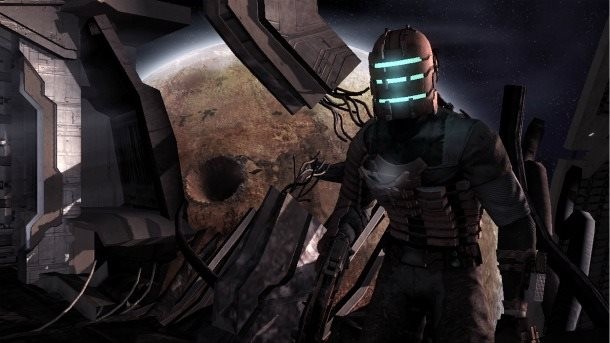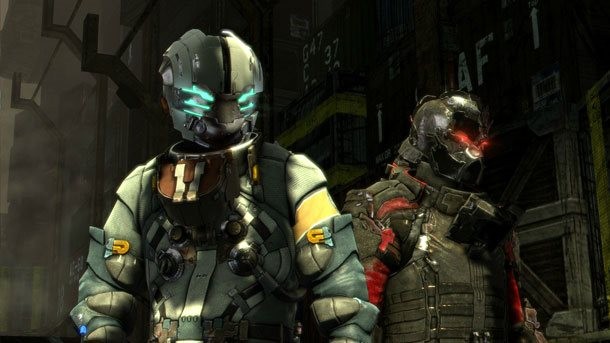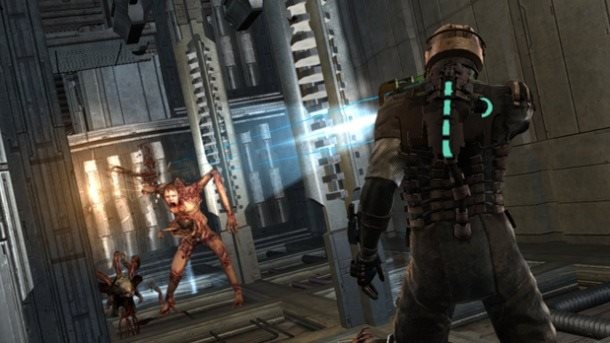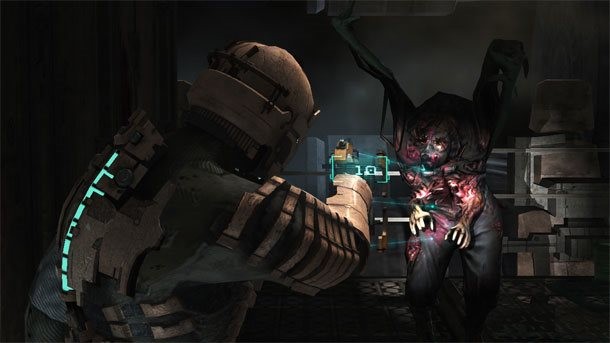Where's My Sequel? – Dead Space

Dead Space led EA’s 2008 charge to create new and innovative games to combat the perception that the company was solely focused on annualized, exploitable franchises. Dead Space was a critical darling, and it was successful enough to spawn two sequels and multiple spin-offs. The series has been MIA since Dead Space 3’s release in 2013, but now would be the perfect time for Dead Space to make a comeback.
What It Is
The first Dead Space is a fusion of many iconic horror and science-fiction films and games blended into one package. It’s a poster child for the phrase “better than the sum of its parts,” because it knows how to balance and blend its inspirations and original ideas. Sending an inept band of characters to a derelict ship with an unknown threat is undeniably pulled from Alien and Event Horizon, but it’s also surrounded with a ton of original lore that give it its own flavor. Shooting is reminiscent of Resident Evil 4, but affords you the extra mobility needed for agile enemies. Necromorphs were faster foes in addition to being an interesting twist on the classic zombie formula. Killing Necromorphs took more than just a well-placed headshot too and opened the door for “strategic dismemberment,” which forces players to carefully aim at limbs and not spray wildly.
Dead Space 2 took the baton from its predecessor and improved almost every aspect. Enemies were more varied, controls were snappier, Isaac evolved into a deeper character, and the game’s visuals were noticeably upgraded. Dead Space 2 had more of an action tilt but it worked in the game’s favor since the explosive moments were paced out well enough to make the horror more effective. All of this made Dead Space the fresh new series that we needed in the early years of the last hardware generation.

When It Stopped
Dead Space’s abrupt end coincided with Dead Space 3’s weak commercial and critical reception in 2013, despite Game Informer’s praiseworthy review. Just before release, EA added pressure to the series by setting high sales expectations for Dead Space 3. Former EA Labels President Frank Gibeau told CVG (in an interview that has since been taken offline) that the game needed to sell five million copies for EA to “continue to invest in an IP like Dead Space.”
Trouble brewed post-release when an unnamed source told VideoGamer.com that EA allegedly shut down Dead Space 4 prototypes at the now-closed Visceral Montreal after Dead Space 3 failed to meet its sales expectations (which has been disputed by some EA employees). After initially declining to comment on this report, EA came out after the story was published to say, “While we have not announced sales for Dead Space 3, we are proud of the game and the franchise remains an important IP to EA.”
It’s difficult to tell if the IP was important to EA given the company’s refusal to use it. Lower review scores, lofty sales expectations, Dead Space 4’s supposed cancellation, and Visceral moving on to develop Battlefield Hardline paints enough of a picture to show plausible reasons why Dead Space has gone on a hiatus.

What Comes Next
Like a corpse turning into a Necromorph, Dead Space may be resurrected one day. While the sincerity of EA’s commitment to Dead Space may be questionable, it gave Mirror’s Edge – another underperforming franchise that released the same year as Dead Space – one more chance, albeit eight years later. While Mirror’s Edge Catalyst’s quality shouldn’t set a precedent for Dead Space, its position as a prequel and reboot should. This makes the most sense since the ending to Dead Space 3’s DLC, Awakened, doesn’t leave much room for a true sequel.
Dead Space needs to recapture the mystery, horror, and sense of isolation that held up the first two entries, something only a reboot could accomplish. This means a new Dead Space has to be a purely solo experience that shifts the focus back to creeping tension and creative jump scares. Cramped, dimly lit environments that are foreign to the character would be essential for evoking the necessary amount of dread. Being stranded in a broken down, alien territory is where all horror thrives and a new setting would have to tap into that. A deserted facility or spaceship is the easy, sensible answer, but there are plenty of different locations that could elicit the necessary fear of isolation, darkness, and narrow hallways.
Going back to horror shouldn’t mean abandoning the shooting. In fact, the series needs to revisit and enhance its strategic dismemberment mechanic. Carefully popping off limbs should be expanded on to better reward players with hitting specific weak spots along with clever ways to punish inaccurate shots. New Necromorphs should have unique limb structures to take advantage of these improvements, which would also go hand in hand with creating a new sense of mystery. Shuffling through dark, desolate halls with unfamiliar threats lurking in the vents would retain the tension that made the first two games so fantastic.

A new protagonist would be an essential part of establishing a sense of horror in the future. Isaac had a good arc in the first two games. He went from scared engineer to traumatized monster expert to overcoming his fear, but he began to stagnate by the third entry. A new character should mirror some of Isaac’s traits but break out in ways to keep the character from being a clone. Like the best horror protagonists, their profession should add something to the character and reflect inexperience in combat. Being an engineer made Isaac an amateur soldier but gave him insight into how to fix things and mechanically approach situations. The new protagonist could be a scientist, doctor, firefighter, or mechanic; all backgrounds with little to no weapon experience but all containing skills that could influence the mechanics and the character’s personality.
Their motivation should also take influence from Isaac and change up the details. Isaac’s reason for visiting the USG Ishimura – the mining ship from the first game – was twofold: to see his girlfriend who was stationed aboard the ship and fix any mechanical issues. His personal and non-personal stakes in the mission should be reflected in a new protagonist and work in parallel to their profession. A doctor could be visiting a soon-to-be-infected ship to tend to the patients and their sick parents while a mechanic could be fixing escape pods for the stranded citizens while ensuring their family safely escapes as well. Horror stories thrive off personal investment because you have to care about the character in order to care about the character’s survival. A Dead Space reboot would be wise to use Isaac’s dual motivations as an inspiration.
Dead Space had a good initial run but Dead Space 3 is not how the series should be remembered. It should be remembered for how it started: a refreshing take on the action-horror genre. It came out in 2008 when that genre needed a new shake up, and 2016 is in a similar situation.
For more hopeful sequel wishes, check out the Where's My Sequel? for Marvel Ultimate Alliance, Psychonauts, and Grim Fandango.

Get the Game Informer Print Edition!
Explore your favorite games in premium print format, delivered to your door.
- 10 issues per year
- Only $4.80 per issue
- Full digital magazine archive access
- Since 1991









